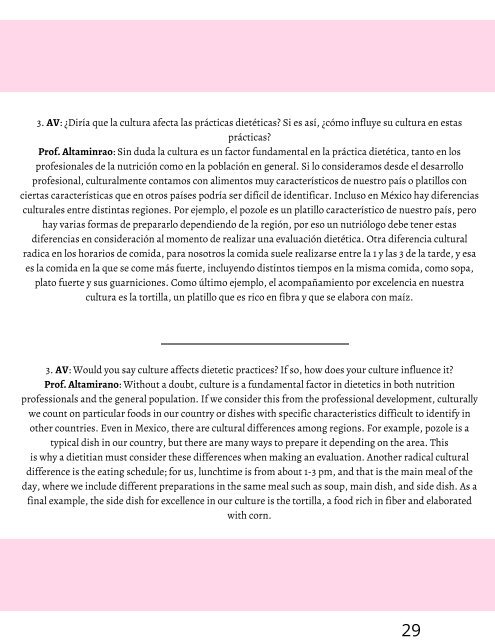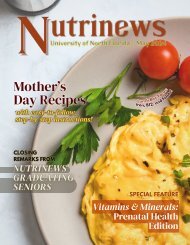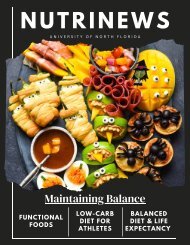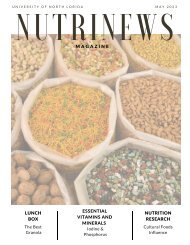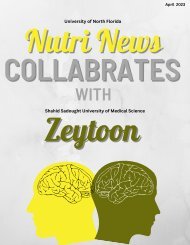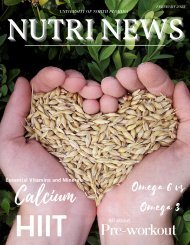march issue
Hello all! The theme for March is National Nutrition Month! Topics include How Nutrition Can Influence Our Health and The Evolution of Hospital Food. This month’s student spotlight is on our very own Alicia Blong. I hope you all enjoy, learn, and get inspired by this month’s articles and recipes!
Hello all!
The theme for March is National Nutrition Month! Topics include How Nutrition Can Influence Our Health and The Evolution of Hospital Food. This month’s student spotlight is on our very own Alicia Blong.
I hope you all enjoy, learn, and get inspired by this month’s articles and recipes!
Create successful ePaper yourself
Turn your PDF publications into a flip-book with our unique Google optimized e-Paper software.
3. AV: ¿Diría que la cultura afecta las prácticas dietéticas? Si es así, ¿cómo influye su cultura en estas<br />
prácticas?<br />
Prof. Altaminrao: Sin duda la cultura es un factor fundamental en la práctica dietética, tanto en los<br />
profesionales de la nutrición como en la población en general. Si lo consideramos desde el desarrollo<br />
profesional, culturalmente contamos con alimentos muy característicos de nuestro país o platillos con<br />
ciertas características que en otros países podría ser difícil de identificar. Incluso en México hay diferencias<br />
culturales entre distintas regiones. Por ejemplo, el pozole es un platillo característico de nuestro país, pero<br />
hay varias formas de prepararlo dependiendo de la región, por eso un nutriólogo debe tener estas<br />
diferencias en consideración al momento de realizar una evaluación dietética. Otra diferencia cultural<br />
radica en los horarios de comida, para nosotros la comida suele realizarse entre la 1 y las 3 de la tarde, y esa<br />
es la comida en la que se come más fuerte, incluyendo distintos tiempos en la misma comida, como sopa,<br />
plato fuerte y sus guarniciones. Como último ejemplo, el acompañamiento por excelencia en nuestra<br />
cultura es la tortilla, un platillo que es rico en fibra y que se elabora con maíz.<br />
<br />
<br />
<br />
<br />
3. AV: Would you say culture affects dietetic practices? If so, how does your culture influence it?<br />
Prof. Altamirano: Without a doubt, culture is a fundamental factor in dietetics in both nutrition<br />
professionals and the general population. If we consider this from the professional development, culturally<br />
we count on particular foods in our country or dishes with specific characteristics difficult to identify in<br />
other countries. Even in Mexico, there are cultural differences among regions. For example, pozole is a<br />
typical dish in our country, but there are many ways to prepare it depending on the area. This<br />
is why a dietitian must consider these differences when making an evaluation. Another radical cultural<br />
difference is the eating schedule; for us, lunchtime is from about 1-3 pm, and that is the main meal of the<br />
day, where we include different preparations in the same meal such as soup, main dish, and side dish. As a<br />
final example, the side dish for excellence in our culture is the tortilla, a food rich in fiber and elaborated<br />
with corn.<br />
29


